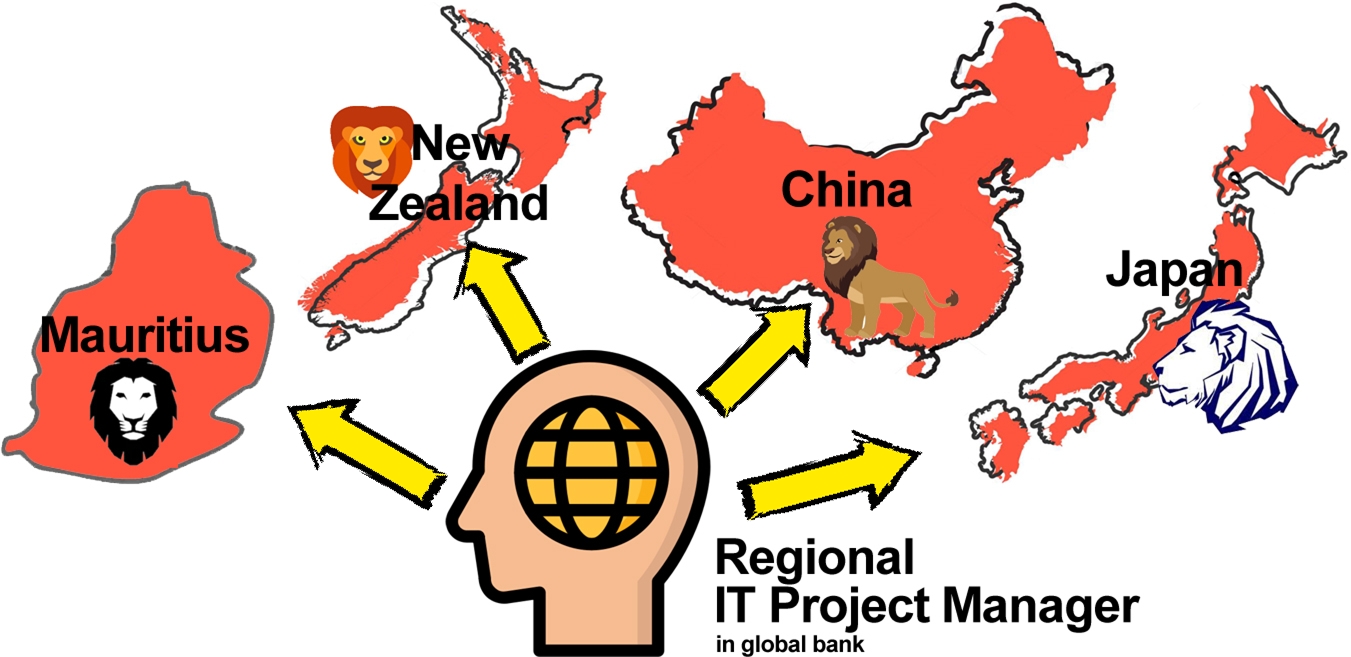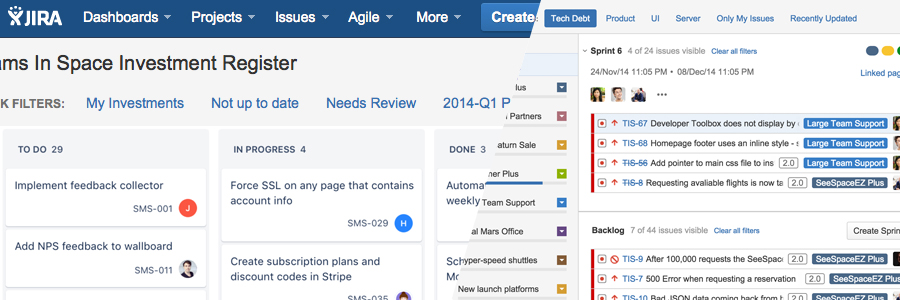 Regional IT Project Manager in global bank.
Regional IT Project Manager in global bank.
Project Background
In year 2017-2018, I worked for a global bank as a Regional IT Project Manager.
To support the businesses world wide, the global bank has a subsidiary for technology research and systems development.
One of the famous products offered by this subsidiary, was a web based front end system for handling the transactions in branch, back office and contact center.
To perfecting this robust front end system, the technical team utilized latest technologies such as Spring, Angular, PCF cloud platform and Oracle database cluster.
Through API calls, this front end system connected with back end core banking system where all the transactions were executed.
This front end system was developed once and for all markets.
As the Regional IT Project Manager, I was responsible for the system deployment of Asia Pacific countries,
accountable for all implementation matters from end to end.
Further implementation details are illustrated in the below sections.
Project Planning
As the Project Manager, I setup project plan to align the understanding of project schedule.
The plan illustrated the details of each stage and its time period, and also the responsible parties.
All stakeholders were required to provide official sign off on the plan, so as to make sure the required resources could be secured.
Project Kick-off Meeting
When the project plan sign off completed, I would arrange project kick-off meeting to briefly illustrate the objective, phases, time, required resources and team structure.
We would treat it as a formal stakeholders engagement.
Project Budget
This was one of the flagship technology transformation projects of the bank. Therefore, top management would pay extra attention then other normal projects.
The cost estimation break down must be fine grained and as accurate as possible, so that stakeholders could be able to recognize the demand of each resources category,
and arrange the resources accordingly. For 4 countries deployment, the approved budget was USD 3.2 million, covering end-to-end implementations,
and the final actual expenditure was USD 2.5 million.
The table below illustrated the detailed cost categories:
| Cost Category |
Remarks |
| Development | The cost of Scrum development team. |
| PM & BA | The cost of Project Manager and Business Analyst resources in regional head quarter (i.e. Hong Kong). |
| SIT Test | The cost of SIT testing team. |
| UAT Test | The cost of UAT Test Manager, and the UAT testers from business units. |
| Performance Test | The cost of implementing volume test, stress test, soak test, etc., and the license of required tools. |
| System Security Assessment | The cost of performing system security test such as penetration test, vulnerabilities scanning, etc. |
| System Compliance Assessment | The cost of system compliance review such as iAM management, fulfilling DR requirements, sensitive data protection, etc. |
| Infrastructure | Covering the cost of hardware and network charges for the duration of project, and the first year running cost after go live. |
| Software License | Covering the cost of software license (e.g. Oracle, WMQ, Linux) for the duration of project, and the first year running cost after go live. |
| User Training | The cost of trainer and the training material preparation. |
| Production Deployment | The cost of supporting production system deployment, such as data center operators and deployment team. |
| Production Support | The cost of production support for the warranty period (i.e. first 3 months after go live). |
Methodology
We so called hybrid mode was applied, which is a combination of Waterfall / MVP model and Agile Scrum methodology.
It was because Agile model is crucial and effective for application development,
while formal documentation review and signoff with business parties (i.e. traditional Waterfall model) is still very important in banking domain.
Thus, picking up the essence of each model was necessary.
Project Team Structure
| Role |
Responsibilites |
| Scrum Team |
- Application development and unit test.
- Technical docs setup.
- Support Sprint review product demo.
- Support SIT, UAT and performance tests.
- Support production deployment and operations.
|
| Project Manager |
- Cost management.
- Project schedule planning.
- End-to-end implementation tasks planning.
- All sub teams co-ordinate.
- Progress monitoring and reporting.
- Requirements negotiation.
- Functional docs setup.
- Fulfil technical and business compliance requirements.
- Support SIT, UAT and performance tests.
- Support production deployment and operations.
|
| Business Analyst |
- Requirements gathering.
- Functional docs setup.
- Support SIT, UAT and performance tests.
|
| SIT Team |
- Perform SIT test.
- SIT test plan and test cases setup.
- SIT test result sign off by SIT Test Manager.
|
| UAT Team |
- Perform UAT test.
- UAT test plan and test cases setup.
- UAT test result sign off by UAT Test Manager.
|
| QA Team |
- Implement performance test (volume test, stress test, soak test, etc.)
- Performance test result sign off.
|
| Infra Team |
- Server, network, middleware setup.
|
| Security Team |
- Perform system security assessments (penetration test, app security test, etc.).
|
| Business Unit |
- Requirements submission.
- Functional docs sign off.
- UAT test result sign off.
- Co-operate on user training and system go live.
|
Progress Monitoring
JIRA Kanban Board
The project team fully utilized JIRA Kanban board to visualize the tasks status of each sprint, and also showing the progress of the entire project.
All stakeholders, including developers, senior management and business units, could easily and quickly understand what was happening about the project.
The progress was so clearly reflected on Kanban board, for example, how many development items completed, how many items were still in UAT stage, etc.
I even made use of Kanban board to establish a progress competition with other project teams who were responsible for the deployment of other countries.
It would be an advantage of motivating the project team.
JIRA Scrum Board
We also applied JIRA Scrum board to monitor the status of each sprint, checking the backlog requirement details,
tracking the relation of items,
grouping items by epic types/developers, etc.
HP Quality Center
HP QC was used for SIT and UAT test cases setup and result checking. This was the main communication channel for developers and testing teams.
We would use it to generate progress bar chart and test cases statistics report for monitoring.
Project Status Report
Project Work Group (PWG)
I would arrange weekly PWG meeting for the following purposes:
- Knowledge sharing.
- High level project status update.
- Individual tasks status follow up.
- Risks and issues follow up.
Project Steering Committee (PSC)
Monthly PSC meeting would be arranged, with the similar agenda and contents as in PWG meeting,
but the target audience were senior management of IT department and business units.
Escalation would be made during PSC to seek for help or approvals from senior management.
One Page Status Update
As the Project Manager, I would prepare a weekly one page dashboard for Global CIO, to report the project status of my team.
The dashboard should recap the project schedule, current stage and next stage, also the estimated cost and the corresponding up-to-date actual cost.
It also contain the RAG status (Red,
Amber,
Green) of the following categories:
- Project perspective.
- Resource perspective.
- Cost perspective.
- Schedule perspective.
If any of the above categories turned to Red or Amber,
the corresponding mitigation plan/path-to-green/time-to-green must be clearly identified.
Challenges
- Co-ordinate a ~40 members team required precise and effective team management skills.
- Sub teams were located at remote sites with different time zones, careful time management was crucial. No mistakes were allowed.
- Detailed mind set was important to analyse hundreds of complex requirement from multiple sites.
-
People in global team environment are smart and efficient,
I as the Project Manager must be strong and confident in presentation, decision making, team leading and negotiating,
in order to gain trust from the team and business parties.
Achievements
- Systems launched to 4 countries on time and within budget, while other project teams delayed or even failed the deployments.
- Compliments gained from top management and business units, for the excellent management of time, team and quality.



